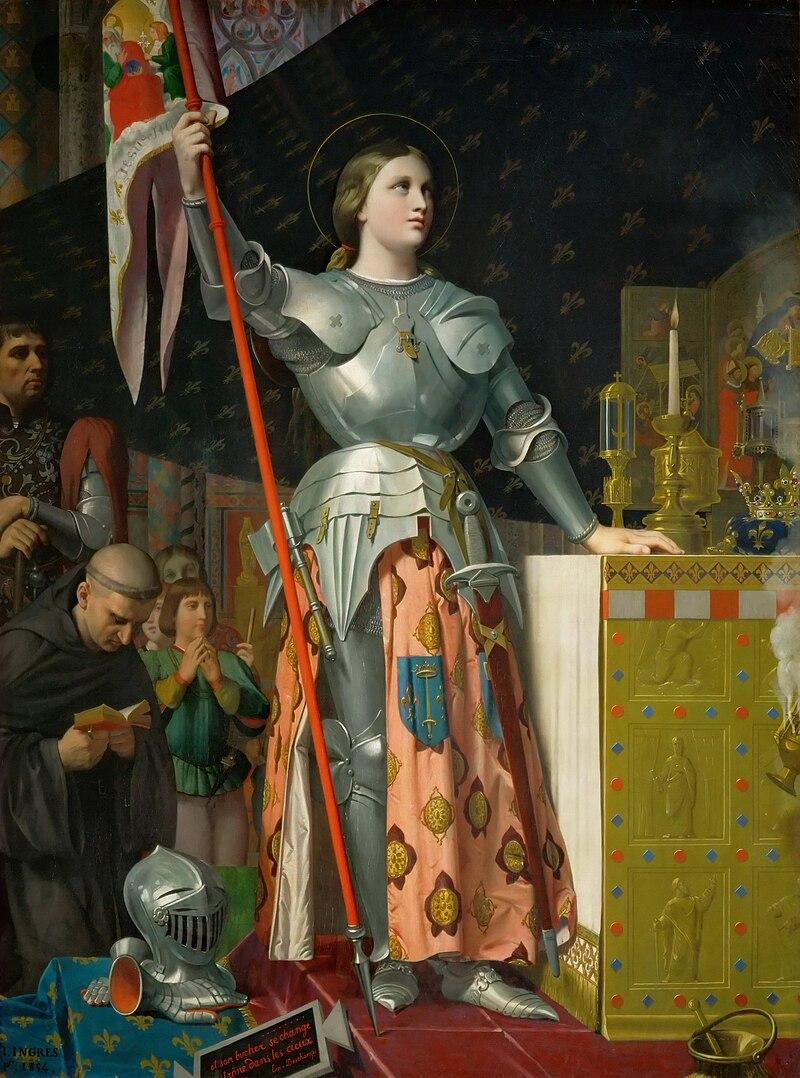
By Alika Khun
On the evening of Mar. 7, Winnifred Fallers Sullivan, professor of religious studies at Indiana University, presented a lecture titled “Making a King: The Political Theology of Joan of Arc” in Wyatt Hall. Sullivan’s interest in religion as a social phenomenon led her to research how it intertwined with lawmakers worldwide, particularly in how it has affected how society operates in the United States via the Catholic Church. Through her studies, Sullivan began to study “The Trial of Joan of Arc,” which she now teaches a class on at Indiana University. Joan of Arc, patron saint of France, the famous cross-dressing warrior woman known for bringing victory to France during the Hundred Years’ War, and the kingmaker that brought Charles VII to the throne has captured the imaginations of scholars, artists, and storytellers for centuries. Also known as Jeanne d’Arc, as her name is rendered in French, or “la Pucelle,” the name she gave herself meaning “the Maiden,” Joan of Arc has served as an inspiration because of her defiance of gender norms, undying faith in an era of chaos and destruction, and hand in the crowning of King Charles VII – all before her eventual death at the stake.
What Sullivan highlighted during the lecture was how unique Joan’s ideology towards religion and government was. Despite Charles VII being king already due to succession rights, Joan famously referred to him as “Dauphin,” meaning simply “heir to the throne,” as she did not immediately recognize him as king. She found it imperative that there should be a separation between what the nobility believed and politics. Joan said that while Charles was regarded as king by the people, he would not truly be king until he was crowned at Reims Cathedral, where he would finally be recognized as such by God.
France would finally triumph in the war. However, Joan was caught and sold to the English where she was tried for war crimes and heresy. Due to her frequent cross-dressing, the English court asked her if she wanted to be a man, to which she never answered. Before this, in France, no one had cared at all that she was a cross-dresser. Although she was commonly regarded as a young peasant girl (though at this point, she was well over the age of eighteen) walking around in men’s clothing, the court considered her blasphemous. The court would go on to accuse her of paganism, which she denied directly. When asked if the voices she heard claiming to be God were the Devil, she denied it. When asked if the voices had come to her naked, she remarked, “Do you think God cannot find any clothes?” — a statement that Professor Sullivan smiled at.
After many accusations and firm denials, Joan of Arc succumbed to torture and was sentenced to life in prison. She was compliant until she was yet again found dressed in men’s clothing in her cell; here, Joan said that it felt wrong for her not to because it felt as if she had betrayed the voices, and claimed that she had only confessed to her crimes because she feared fire. Her fear would become a reality, and the legendary Joan of Arc was burned at the stake. Professor Sullivan made a point that Joan of Arc would be canonized as a martyr and saint for her death, but this fact holds controversy as she did not die for her faith. She died because she felt that, in staying quiet, she was betraying an integral part of herself.
An interesting development that Professor Sullivan highlighted during her lecture was how the portrayal of Joan began to change over time. While Joan was known for presenting herself as a man, many paintings depict her in a more feminine presenting way. This is especially noticeable in artwork from the 1800s, where she is drawn with long hair and armored skirts. When she is not depicted in this way, she is shown to be dressed modestly in feminine clothing, looking wistfully upward toward what is implied to be God. This is more apparent in paintings that depict her execution. In a way, this makes her appeal more to the traditional image of a female saint rather than the rebel soldier in a war. The act of presenting her this way acts as a means of censorship since her masculine presentation was one of the main points of contempt during her trial. Despite being a controversial figure, the legend of la Pucelle continues to capture the hearts and minds of many.
